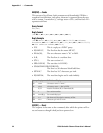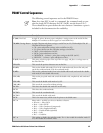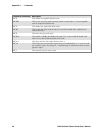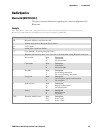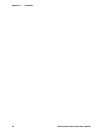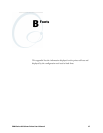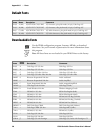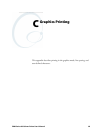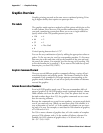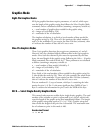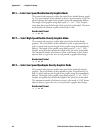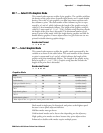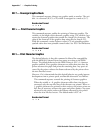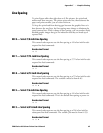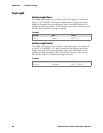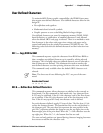Graphics PrintingAppendix —C
60 PK80 Series 80-Column Printer User’s Manual
Graphics Overview
Graphics printing proceeds at the same rate as condensed printing. Print-
ing at higher density does requ ir e two passes per line.
Pin Labels
The graphics mode requires a method to tell the printer which pins to fire
in each column. Since there are 256 possible combinati ons of eight pins,
you need a numbering system that allows you to use a single number to
specify which of the 256 possible patterns you want.
S 128 S 4
S 64 S 2
S 32 S 1
S 16 S Not Used
S 8
Vertical spacing between dots is 1/72”.
You can fire any combination of pins by adding the appropriate values to-
gether. To fire any one pin, send its corresponding number. To fire more
than one pin at the same time, add up the numbers of the pins and send
the sum to the printer. For example, you fire the top pin by sending 128,
or fire the bottom pin by sending 1. If you want to fire both the top and
bottom pins, you send 129 (128+1).
Graphics Command Format
There are several different graphics commands offering a variety of hori-
zontal dot densities and printing speeds. The format is similar for all the
commands. Each command is an escape sequence correspondi ng to the
graphics mode, followed by n1 and n2 to specify the number of columns
reserved for graphics.
Column Reservation Numbers
Even in 60 DPI graphics mode, one 8” line can accommodate 480 col-
umns of graphics; in 240 DPI graphics mode (quadruple-density), almost
2000 columns can fit on the same 8” line. Since the printer does not use
decimal numbers larger than 255, the graphics commands use two num-
bers for reserving columns.
Because the commands are set up for two numbers, you must supply both,
even if you need only one. When you need f ewer than 256 columns, it is
easy to determine n1 and n2. n1 is the number of columns you are reserv-
ing and n2 is zero. For example, to send data for 200 columns of graphics,
n1 is 200 and n2 is 0.
For 256 or more columns of graphics data, n2 is the number of complete
groups of 256 columns, and n1 is the number of leftover columns. For
example, for 1632 columns of graphic data, n1 is 96 and n2 is 6 as
96 + (6 * 256) = 1632.



